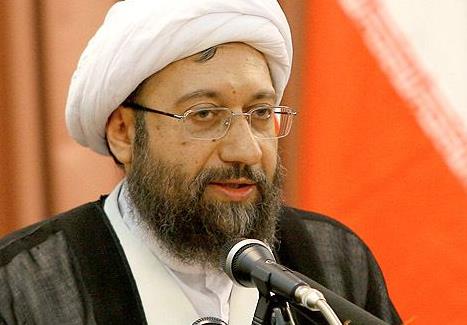The leaders of the Islamic Republic never imagined that a day would come when people of all ages, including high school students, would march in cities all around the country and shout slogans against the government, the regime and even Velayat-e Faqih [the Guardianship of the Islamic Jurist, Supreme Leader Ayatollah Ali Khamenei.]
A number of video clips were posted on social media on January 7, showing high school students in [southeastern] Sistan and Baluchestan Province and Ahvaz [capital of southwest Khuzestan Province] protesting in the streets.
“Most people arrested within my constituency are between 16 and 24 years old,” said Hedayatollah Khademi, Majlis [Iranian Parliament] representative for Izeh, [Khuzestan Province]. Khademi added: “We have high unemployment in the region. Our young people are under tremendous pressure.” Two people have died during clashes with anti-riot police in Izeh since the start of the nationwide protest on December 28.
On January 6, Iran’s Minister of Education, Seyyed Mohammad Bathaei, said he was negotiating with the Ministry of Intelligence for the release of the students who had been arrested during the protests. On the same day, Hossein Zolfghari, the Deputy Interior Minister, admitted that most of the people arrested were underage youths and young adults. A number of families of those detained gathered in front of Tehran’s Evin Prison on January 7, demanding the release of their loved ones.
The Islamic Revolutionary Guards Corps [IRGC] released a statement claiming that the unrest had ended. It thanked the public, the Basij forces [volunteer militia] and the anti-riot police. “This was a plot by the U.S., Israel, Saudi Arabia, Britain, the monarchists and the People’s Mojahedin of Iran [MKO],” the statement said.
Hojatoleslam Mahmoud Mohammad Shahrudi, the head of the Cleric Basij Organization, said: “The Islamic Republic would not allow the enemies to succeed.” The Supreme Leader’s representative to the Basij force, Hojatoleslam Mohammad Reza Toyserkani, said: “January 8 marks the anniversary of Kashf-e Hijab [banning Islamic veils in 1936] by Reza Shah [founder of Pahlavi dynasty.] [Prince] Reza Pahlavi [grandson of Reza Shah] has sent a message, declaring that today marks the emancipation of Iranian women. He is dreaming of re-establishing the monarchy in Iran.”
In a letter to the Governor-General of Tehran Province, Branch 7 of the student Basij group at Tehran University has called for a demonstration in front of the Majlis in support of the regime.
Hojatoleslam Hamid Shahriari, the deputy head of the Judiciary, has warned against “enemies’ use of social media and the Internet, which are controlled by foreign powers, to undermine the Islamic Republic.” Behrouz Nemati, Tehran’s representative to the Majlis has claimed that the protests were engineered by the CIA. Shahriari, said: “We don’t know the exact number of ‘agitators and plotters’ who have been detained. But we have arrested all the ringleaders.”
Some reports put the total number of those arrested during the anti-government protest at around 3,700 people. This is a much higher number than the 450 people that the Iranian authorities said they detained. At least 21 people have been killed according to official figures.


